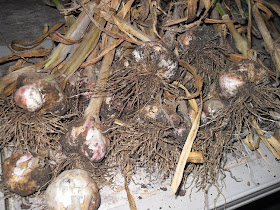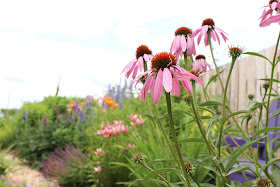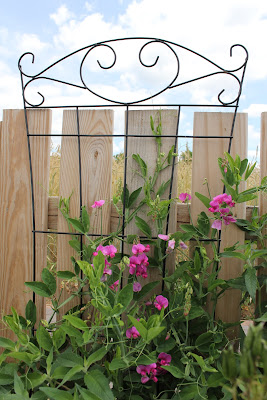 |
| Steve Bogash, Penn State Extension Horticulture Educator |
Steve Bogash, Penn State Extension Horticulture Educator was our instructor covering the topic of Managing Plant Diseases. With the recent discovery of
Late Blight in the county, this was a timely lesson. One way to discourage disease is to minimize moisture on leaves, since the pathogens need the water to grow. This can be accomplished by using an irrigation system, or a soaker hose system, which has the added benefit of still being able to water if you go on vacation, by attaching a timer. Weed control is also important. Another way to reduce the presence of diseases is by removing plants at the end of the season and destroying those that have been infected. Crop rotation can also help by not growing plants in the same family in the same spot the next year since they are all susceptible to the same diseases. Plants that are vigorous are also more likely to resist diseases.
Plant varieties can be more or less resistant to diseases. Many people like heirloom varieties, possibly because they are perceived to taste different, but they may be more susceptible than the hybrids which have been bred for many factors, including disease resistance.
Chemical control of diseases was introduced, including organic products. Some can encourage plant vigor as well as managing diseases.
 |
| Donated Harvesting Baskets |
Harvesting baskets were offered as a gift by a 2011 alumnus of the Victory Garden to this year's class. We promptly put our names on them. Thanks, Roxanne.
 |
| Harvesting Radishes |
 |
| Harvesting Lettuce |
Our activites included harvesting radishes and lettuce from the raised beds. The spinach had bolted so had to be pulled.
 |
| Weeding the Bush Beans |
Weeding was also done, but the mulching has inhibited the growth of many weeds making that chore not much of a chore.
 |
| Tieing up the Tomato Vines |
Our tomatoes were at a point where they needed to be tied to their stakes and the celery finally was able to be mulched.
The beans sprouted in the No Till area, where we started a
three sisters garden.
All in all it was a very good day with the sun not hot on our backs and the rain holding off. We look forward to more harvesting next week.







 With the cardoon plant, the stalks are the part that is eaten. They are blanched (hidden from the sun via straw, or earth for several weeks) toward the end of the growing season, like what is done with celery, then harvested and used as a vegetable. Here's a recipe from 1868:
With the cardoon plant, the stalks are the part that is eaten. They are blanched (hidden from the sun via straw, or earth for several weeks) toward the end of the growing season, like what is done with celery, then harvested and used as a vegetable. Here's a recipe from 1868:














































